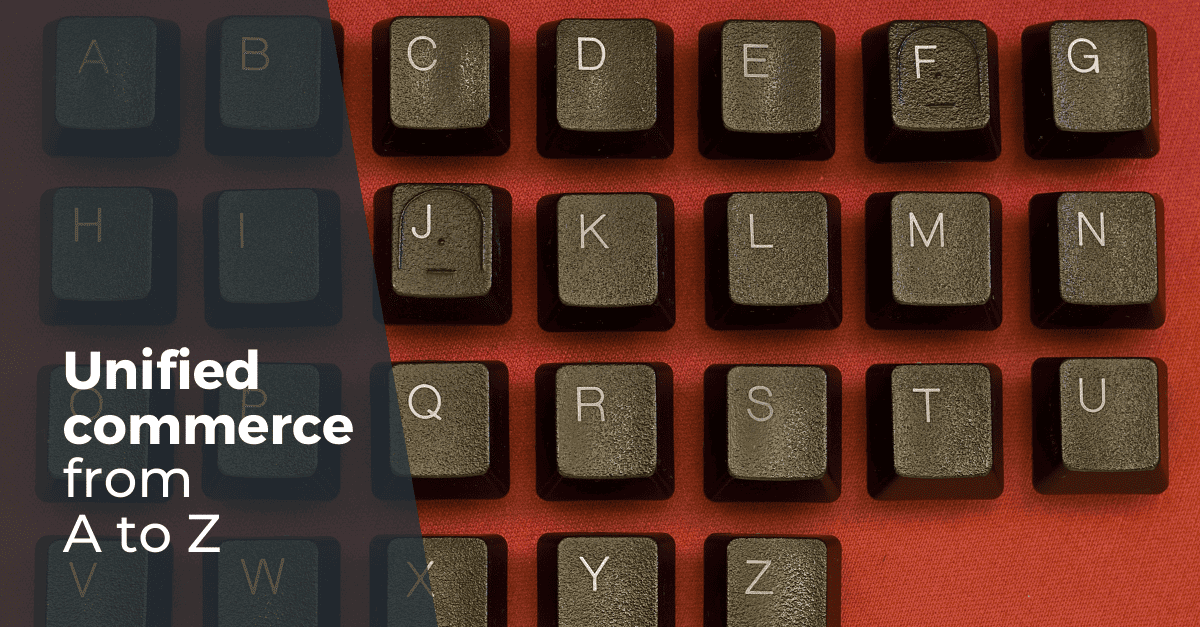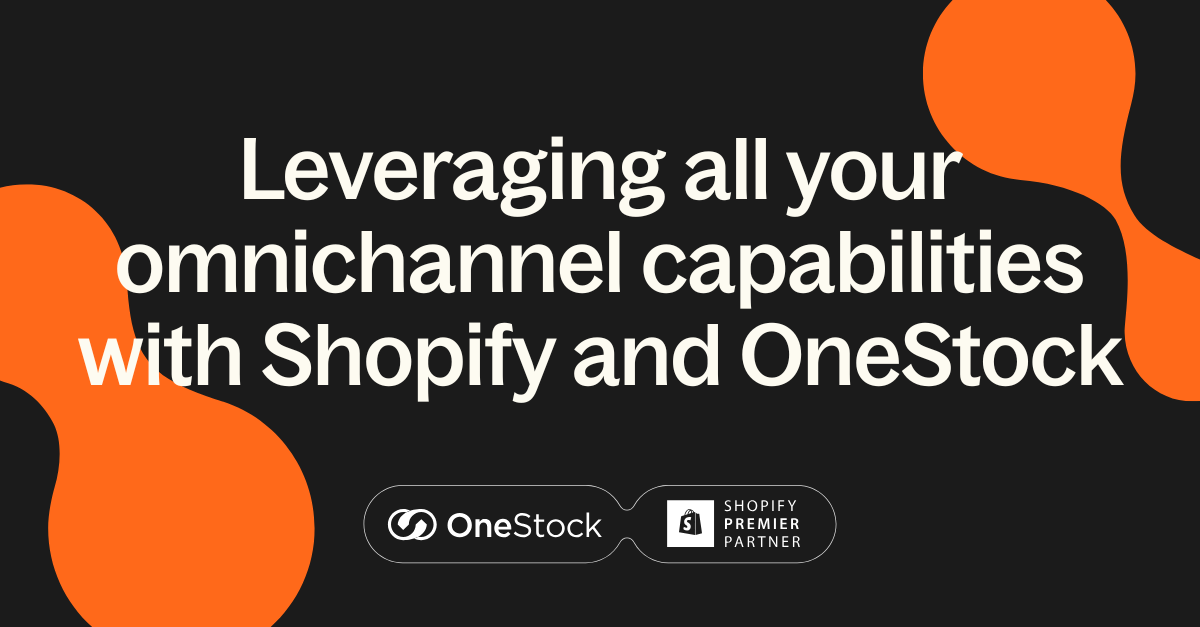
Unified commerce from A to Z
72% of retailers are making unified commerce a priority in 2022*! Aware of the evolution of consumer habits, retailers have understood the importance of moving towards omnichannel and unified commerce. In today’s sea of buzzwords, abbreviations and acronyms, it is sometimes difficult to find your way around. As experts in unified commerce and European leaders in Order Management Systems, OneStock has put together a glossary of unified commerce.
A – API
“Application Programming Interface” For unified retail projects, it is necessary to connect your applications and software to each other. The application programming interface allows you to establish these connections quickly and securely. In this way, the OMS will be at the heart of your information system and connected to your ERP, e-commerce site, cash register software, PIM, carrier, etc. via APIs.
B – Best of breed
The “Best of Breed” approach consists in selecting the best tools/software in their specific category rather than turning to a general solution that covers all issues with less precision.
For the letter B we could also have chosen BORIS or BOPIS, you can discover these two omnichannel solutions right here.
C – Click & Collect
Allowing customers to collect their online purchases in-store. Thanks to the unified stock, Click & Collect orders can now be prepared from any storage point: directly from the pick-up store’s stock (to offer express collection), from the main warehouse or another store.
D – Delivery Promise
The purpose of a Delivery Promise is to display reliable and accurate information on the website regarding the availability of stock, delivery methods, associated delivery times and the carbon impact for each. The aim is to provide an experience aligned with the expectations of omnichannel shoppers.
E – Endless Aisles
Endless Aisles, infinite shelves, extended catalogue, unlimited stock… all terms that describe the advantage of Order In-Store. In-store, if a customer cannot find the product they want, the store associates can access all the products in the catalogue and connect to all the stock points (warehouses, point of sale network, etc.) via their tablet. Order in Store is, therefore, a major asset for smaller stores that can expand their range.
F – Future Stock
Future stock increases the catalogue of products available for sale by integrating the stock in the process of being restocked, in transit, or available for order from a supplier. Particularly relevant in a tense logistical context, future stock enables retailers to respond to customers’ purchasing intentions by displaying available stock continuously and thus avoiding them turning to a competitor for their purchases
G – Global Expansion
Thanks to Order Management Systems, unified commerce and stock unification, international development can be facilitated and accelerated. Retailers can use the stock in their local stores to launch their e-commerce business in new markets. There is no need to invest in dedicated warehouses for each territory or to systematically ship from the UK. For example, Okaïdi ships 100% of its web orders from its stores in Romania, Slovenia, Poland and Switzerland.
H – Headless Commerce
Each sales channel has a different way of interacting with customers and different objectives. However, it is the same brand that is being represented and potentially the same connected customer. The customer, therefore, expects a unified experience across all channels. Headless Commerce separates the frontend systems from the backend ones. This is done without negatively impacting the information displayed (front end) and by creating specific and personalised experiences for each channel.
I – In-Store Appointments
In-store appointments allow your customers to book a personalised appointment with a store associate on your website. This allows you to offer your customers a premium shopping experience and increase the average shopping basket size (x3 for fashion brands).
J – Job
Unified commerce and Order Management Systems (OMS), in addition to improving the customer experience, also improve your store associates’ work and day-to-day operations. Centralizing all omnichannel services on a single interface, step by step guides for order preparation, advising customers by accessing all their known information and order history, managing returns, processing payments on the shop floor… All these advantages add up to the most important one: making it easier to achieve your objectives! Indeed, for a successful omnichannel strategy, we recommend that retailers reward store associates for each web order shipped or prepared.
K, L – Last Kilometer (ok, we cheated a bit ;-D )
Last-mile delivery is the most expensive (20% of the total supply chain cost), which is why retailers must work on its optimization. With unified commerce, you can orchestrate orders as near as possible to the consumer’s address. You can offer home delivery (Ship from Store) from the nearest store to reduce the cost of transport or collection in store (Click & Collect) to reduce collection time.
M – Marketplace
A marketplace is a platform that connects buyers with several brands within a single website. As an additional sales channel, retailers have understood the benefits of being listed on a marketplace. Thanks to an Order Management System, orders placed on marketplaces can be orchestrated and dispatched by your main warehouse or by your network of stores.
N – Niche retailing
Niche Retailing implies selling only to a specific market segment by specializing in a specific type of product or a set of related products. For example, many luxury brands are considered niche. When it comes to these niche or luxury brands, consumers expect a higher level of service, which can be attained thanks to solutions like Reserve & Collect, In-Store Appointments or 1-hour delivery.
O – Order Management System
The Order Management System or OMS is a unified commerce solution designed to centralise and optimise order management, from order taking to reception/pick-up.
To achieve this, the OMS is based on 4 fundamental concepts:
1. Stock unification: unifying and making available information on all stock (warehouse(s), stores, supplier(s), future stock… ) for all points of sale (stores, web, marketplaces, etc.)
2. Orchestration or order distribution (DOM): the ability to dispatch orders per the rules set by the retailers: profitability, speed, stock clearance, carbon impact, etc.
3. Unified customer services: give store associates the ability to access all customer information and purchase histories and facilitate processes such as order tracking, modification and returns.
4. Preparation tools: providing store employees with the necessary tools to prepare an order step by step: picking, packing, printing the delivery note, depositing it in a dedicated area ready for collection by a carrier or a customer.
P – Product Recommendation
In-store and online, leverage unified commerce and recommend relevant products to your customers at different stages of the buying journey. Gender, size, colour, style… identify the characteristics of previous purchases to suggest complementary items and increase the cross-sell/up-sell rate. Product recommendations are a real plus during in-store visits, creating an individualised experience for each customer and enhancing the in-store experience.
Q – Queue Busting / Queue Boosting
During busy periods in the stores, store associates can be assigned to process payments from the queue or the shop floor. This way, you avoid missing out on purchases due to long queues. The customer benefits from a faster checkout, increasing their satisfaction and their shopping experience in the store.
R – Returns Management
Because your customers want to buy anywhere and return anywhere! Unified Commerce bridges the gap between the different channels and ensures that stock information is automatically updated upon return so that the product can be put back on sale as soon as possible.
S – Ship from Store
The Ship from Store is one of the leading solutions for unified commerce! It allows you to use your stores as mini-warehouses. Thanks to the unification of stock and order orchestration, the stores eligible to process an order receive a notification. The fastest store then picks up the order and takes care of shipping it. This balances all store stock and reduces the number of unsold items at the end of the season while boosting the enthusiasm of store associates by making it easier for them to achieve their goals.
T – Transfers
Store to Store Transfers – To balance the stock between your different stores and reduce the number of unsold items, transfers make it possible to ship stock from one store to another. For example, you can transfer stock to another store for an Express Click & Collect or to outlet stores for destocking operations.
U – Unified Stock
As the cornerstone of unified commerce, Unified Stock is the basis for all omnichannel scenarios. Create a single view of all your physical stock – warehouse(s), stores (branches, franchises, corners…), drop-shippers, suppliers, future stock… – and provide an accurate and reliable view for your teams and customers. Choose the stock you want to make available for sale on each sales channel to optimise the brand’s omnichannel experience and consistency.
V – Visibility
Your OMS must allow you to have global visibility of stock but also of omnichannel orders in order to offer different levels of analysis: real-time activity monitoring, order monitoring, visibility of the efficiency of each shipping point, visibility of the average execution time of each shipping point, monitoring of the efficiency of orchestration rules, etc.
W – WISMO (Where IS My Order)
No matter which digital channel the customer chooses (e-commerce site, marketplace, etc.), you must give them the possibility of tracking their package reliably and accurately. In this way, you optimise one of the aspects too often underestimated by retailers: the post-purchase experience.
X – Xmas
Christmas, Sales, Black Friday, Cyber Monday… The number of commercial operations is increasing. Some of your channels perform better than others and stocks are out of balance. Thanks to unified commerce and stock unification, you will be able to sell all your available items! Right down to the last available item that is waiting to be purchased on the shelf of a very low-footfall store.
Y – Yes!
Say yes! Whatever the sales channel, don’t let your customers leave because their size is no longer in stock and offer a truly unified shopping experience. “I don’t have it in stock, but yes, I can order it from you! I see that your shirt is available in such and such a store, I can ship it directly to you within 2 days, or, if you prefer, come back tomorrow to pick it up :)”
Z – Zero Emissions
With unified commerce and order orchestration, you are working towards greener logistics! Give your customers the choice to pollute less by displaying the carbon impact of each transport mode. You optimise your logistics operations and can choose green modes of transport such as by bicycle for Ship from Store deliveries for example. Finally, fewer products in stock at the end of the season means fewer returns to the warehouse and less waste and therefore less pollution.
To learn more about unified commerce and our omnichannel solutions, contact us!
* HiPay Study: les 5 scénarios de commerce unifié les plus prometteurs. https://www.ecommerce-nation.fr/commerce-unifie-tendance/


